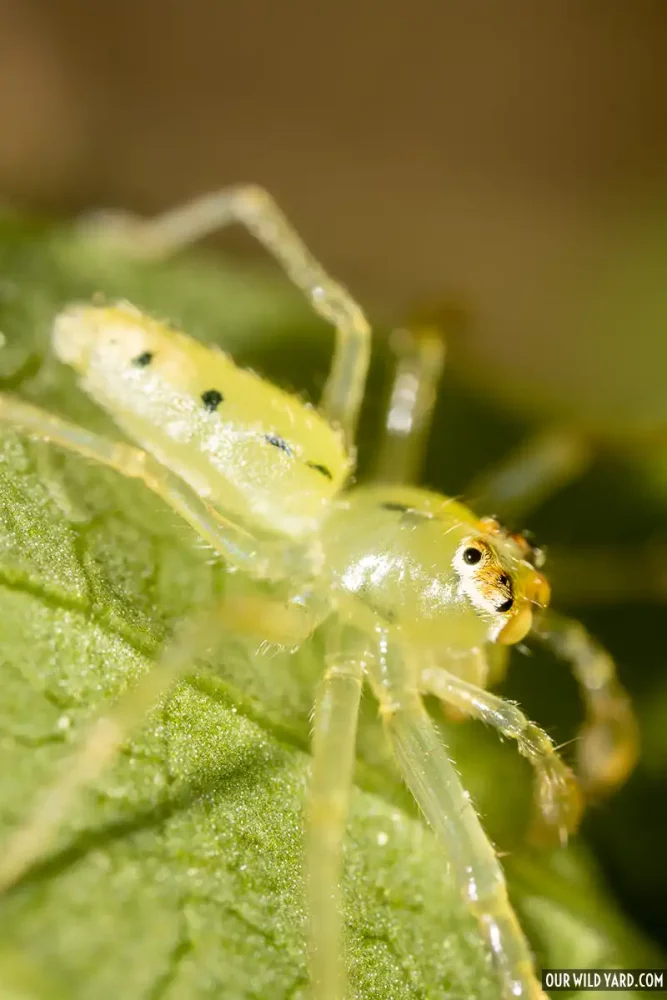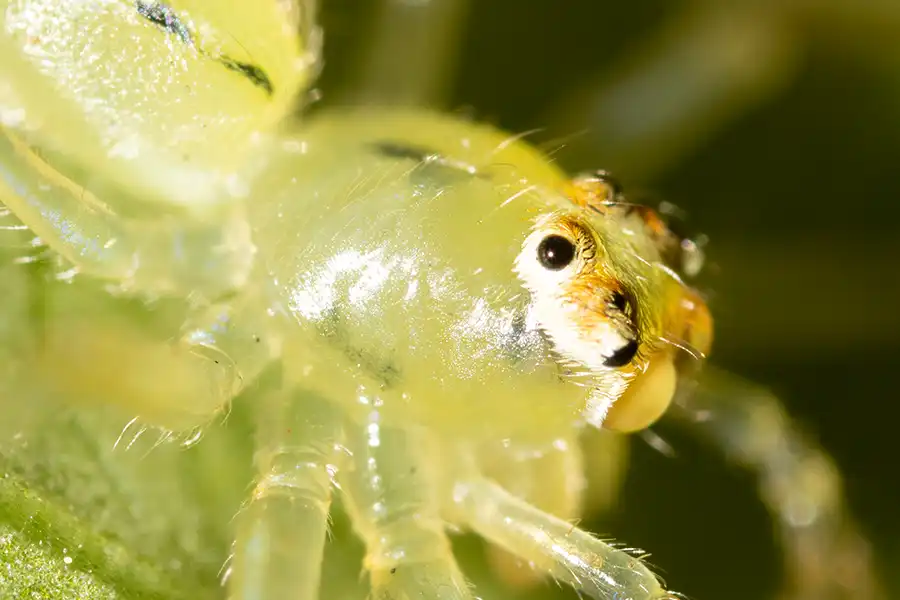The Magnolia green jumping spider (Lyssomanes viridis) is a small green jumping spider that can be identified by the four pairs of black dots on either side of its midline.

*This article may contain affiliate links. We receive a small commission at no extra cost to you.*
Do you need a great spider field guide? We recommend the Princeton Field Guide of Spiders of North America by Sarah Rose.
Males are smaller than females. Males are 5-6 mm long and females are 6-7 mm long.
The prosoma (the front section of the body) is bright green, and the legs are yellow to green. Adult males have black bands on their legs.
The Magnolia green jumping spider has some hairs and red around the eyes, and the chelicerae (appendages in front of the mouth) of adult males are elongated and deep red.
Juveniles lack the black bands on their legs and the red color around the eyes is not fully developed. The juvenile in the photo below has some red color showing.

Magnolia green jumping spiders are found in wooded areas or around herbaceous vegetation in the southeast of the United States. States where they can be found are: Alabama, Arkansas, Florida, Georgia, Louisiana, South Carolina, North Carolina, Texas, and Virginia.
What does the jumping spider eat?
This small jumping spider eats a variety of plant-eating insects like mites, aphids, and ants. Sometimes they’ll feed on other small jumping spiders.
Do Magnolia green jumping spiders make silk?
While Magnolia green jumping spiders don’t make spider webs, do can make silk which they use when jumping as a safety rope.
Females also use spider silk to cover their eggs once she lays them.
